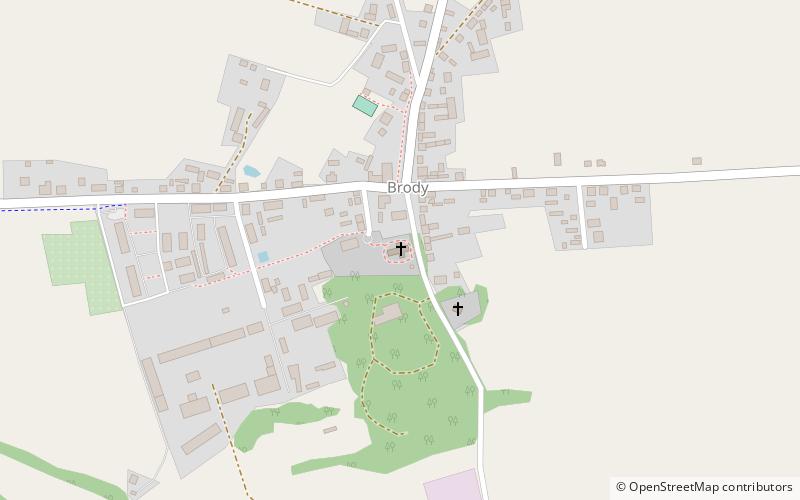Kościół parafialny pw. św. Andrzeja Apostoła


Facts and practical information
Parish Church of St. Andrew the Apostle in Brody - rises in the middle of the village and is the largest wooden church in the Poznań archdiocese.
It was built in the years 1670-1673 of larch wood using the log construction as a single-nave, oriented. According to dictionary of geographical kingdom of Poland it was founded by Brocki family of coat of arms Lodzia, and according to parish website - by Piotr Lubicz Kurowski. Rococo furnishings were made by Jan Becker's workshop in Leszno. In the eighteenth century the church was extended by sacristy and porch. Above the porch rises a square tower, topped with a spherical Baroque cupola.
Besides the main altar there are three side altars on each side, also Rococo, from 1760. Inside there are two coffin portraits and seven epitaph plates. Most of the polychrome and additional decorations come from the interwar period.
The church is surrounded by the cemetery, which is covered with maples, lime trees and chestnuts, among which there is a prominent broad-leaved lime growing near the church tower - a monument of nature with a circumference of 670 cm and a height of 25 m.
On the south side of the church in 1935, a grand monument made of granite blocks was erected, commemorating the fallen in World War I and the Wielkopolska Uprising, later supplemented by a plaque with the names of World War II victims. Next to it there is a wooden bell tower from 1949, adapted in its architecture to the church. The bells are older: one from the late fifteenth century and the other from 1730. Near the church there is also a brick rectory, built in the interwar period.
In 1804 the independence activist Emilia Sczaniecka was baptized here.
Greater Poland
Kościół parafialny pw. św. Andrzeja Apostoła – popular in the area (distance from the attraction)
Nearby attractions include: Kościół pw. św. Wawrzyńca, Kościół pw. Wniebowzięcia NMP oraz św. Jana Chrzciciela i św. Jana Ewangelisty.


